Peter wrote:
and who wants WIFI running (and not possible to turn off, since the camera is remotely mounted) when e.g. flying an IAP in real IMC?
Why not? I have it running all the time from the ADL-120 and the VIRB.
The Virb has various issues too e.g. here is a long review.
And the New VIRB XE is much better. I can’t prove it but many of the probs identified have been corrected. see here
The review is about the old version, now an obsolete product, so it’s not really relevant to a choice today.
To me the GPS integration and associated data in the Garmin product make it a much more interesting proposition than GoPro or any of the other action cams. I have the new version, much improved, it’s called the Virb XE
A quick look at the Virb XE shows that it has a halved battery capacity to the previous model, and runs for a claimed 2hrs.
So it doesn’t really solve the main issues. It would still need to be either wired up, or be turned on-off remotely.
What is interesting about it is that it can apparently take bluetooth audio IN which is a lot easier (especially in a start-stop application done to save power) than recording audio separately and then trying to sync it. It’s field of view (H, 16:9) is 120 degrees which is like the 1000V with stabilisation on.
It’s a good product, though I am still not keen on its shape which, like the go-pro, is very unaerodynamic and probably susceptible to shake due to buffeting.
I turn my virb xe on and off via the iPhone app. You can preview the picture and alter the picture settings.
There are strengths and weaknesses with all of these devices. It’s not perfect but it seems to work for me.
There are strengths and weaknesses with all of these devices. It’s not perfect but it seems to work for me.
Yes – in the end, most of these products are similar. They use the same sensor, probably from Sony, and differ in small details. The biggest thing is the overall shape, which I think is important though others will disagree (though I don’t know how many are successfully shooting videos at 150kt with an externally mounted one and avoiding the worst prop effects). The poor battery life (under 2hrs and sometimes under 1hr in reality) of all of them means, as I say above, they need to be either wired-up or be remotely controlled, and those which support only wifi (as opposed to bluetooth) will probably not make it through a flight of say UK-Croatia even if they don’t ever get turned on!
One puzzle is why none (?) seem to do preview video streaming via bluetooth. Wifi kills the battery, and the preview needs very little bandwidth.
Why not? I have it running all the time from the ADL-120 and the VIRB.
That’s like saying you rob banks for a living but never had a problem 
Nobody can cast doubt on the truth of the statement, but some may choose to follow a different path.
Peter wrote:
Nobody can cast doubt on the truth of the statement, but some may choose to follow a different path.
Sure but why?
I managed to get a US based pilot to do a test of the 1000V camera, in standby i.e. no recording, but with wifi on, and with wifi off.
The purpose was to see if one could externally mount it and do say a 5hr flight, turning it on/off over wifi remote control.
It turns out the standby time is only about 2hrs without wifi, and about 1:45 with wifi (but no wifi clients running).
So no way could this be done without external power wired to it.
And I suspect the other cameras are the same, or similar. Nobody quotes the standby time. I suspect the reason for the poor standby battery life is that the camera is always running and outputting video on HDMI.
So this technology has some way to go – unless you just pop up for a quick flight to do this. One could make it work with an external USB power pack.
I bought the 1000V and have done some tests.
First I did battery life tests, with the wifi on, which is relevant to it being mounted outside the cockpit.
With the camera set to 1080P, 50FPS, PS mode, PAL, I get the following
The last mode above is for situations where you want to remotely start/stop the recording and spend relatively little time actually recording anything. That would be the most typical aviation application. But clearly there is no way to externally mount this camera and make it work over a say 5hr flight, even if you recorded only a 5 minute clip with it.
Taking in the other data which another pilot collected with the camera set to 4k recording and where similar times were obtained, this suggests that the 1000V runs its processor flat out the whole time, capturing 4k video the whole time, even on standby, and then – according to the config – downsizing this 4k video to say 1080P for writing to the SD card and separately downsizing it for the HDMI output (which also cannot be disabled).
This is a really dumb design, because the resulting short battery life precludes many applications. I estimate the temperature rise of the 1000V over ambient is about 25C! It is amazing they manage to get 2hrs of running this space heater out of the small battery!
It will be a lot warmer in the “greenhouse” waterproof case so I can see it shutting down rather readily (inside a cockpit for example) in warm situations e.g. summer, sunlight, and no air movement. Most tablets and phones shut down and the 1000V will be no different. They try to protect the battery, as well.
However the go-pro is no better in any of the above respects, according to reports, so Sony probably thought they don’t need to do anything clever.
Notably, the penalty of having constant video streaming to the phone is insignificant. Also the HDMI output is always there so one could use the camera as a webcam, and with USB power it would run for ever.
I then did a flight test to see how bad the rolling shutter is on the propeller. There were claims that it is not as bad as the go-pro.
Well, it is less offensive than the go-pro but still way too bad IMHO. So I used a variable density filter (two polarised filters, mutually rotated) to see how good one can get it. The video below shows what can be achieved. The brightest setting corresponds to roughly an ND4 filter and actually I tested it also with a standalone ND4 filter.
It is clear that the propeller can be very adequately suppressed – more so than anything I have seen with a go-pro. The best point is around time 00:12. Prior to that, you can see when I adjust the filter; each time the image brightness drops momentarily until the auto exposure tweaks the camera to the previous exposure setting. It’s not as good as a fully manual shutter camcorder (on which the prop can be totally removed, with a 1/80 shutter speed) but good enough.
The Q is whether the image quality is too degraded… hard to tell.
I don’t know what ND filter value that corresponds to but it is way darker than ND4. Probably ND8 or ND16.
On other matters on the 1000V camera:
The “wristwatch” remote controller is problematic. I don’t know if there is a special procedure I am missing but I can get it working only half the time. Whereas the S6 phone connects to it perfectly and you can watch the video on it, configure some features on the camera, etc.
The claim of being “splash proof” for the bare camera is somewhat imaginative. I reckon water would get in quite easily, especially in the back of it.
The waterproof housing is really well made however. I would use that to mount the camera externally, because one can screw a bracket to it, and if it gets buggered you just buy another one. I will probably modify it to enable a power cable to the camera so the camera can be used on longer flights.
The waterproof housing doesn’t have a visible effect on image quality:
With:
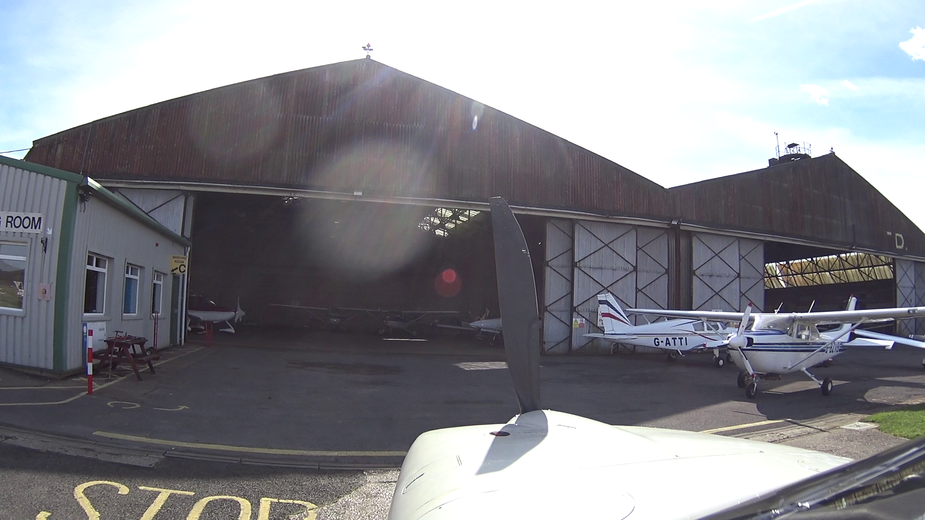
Without:
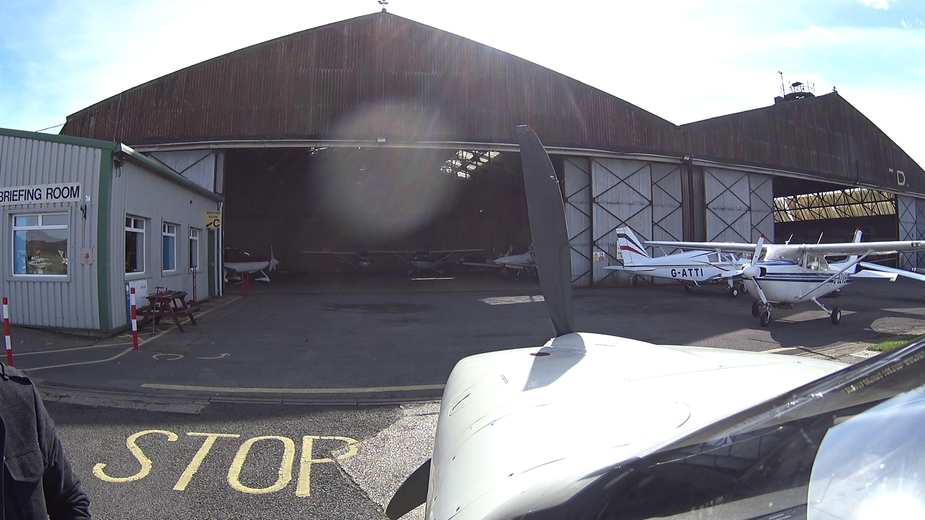
Curiously, the housing reduces the viewing angle of the camera slightly, and reduces the distortion of straight lines! The above pics are full-width frames from the VLC player.
I did some mods to the waterproof case, to enable external power while keeping it sealed:
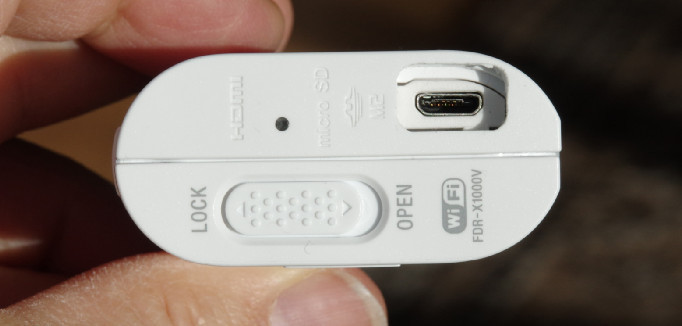
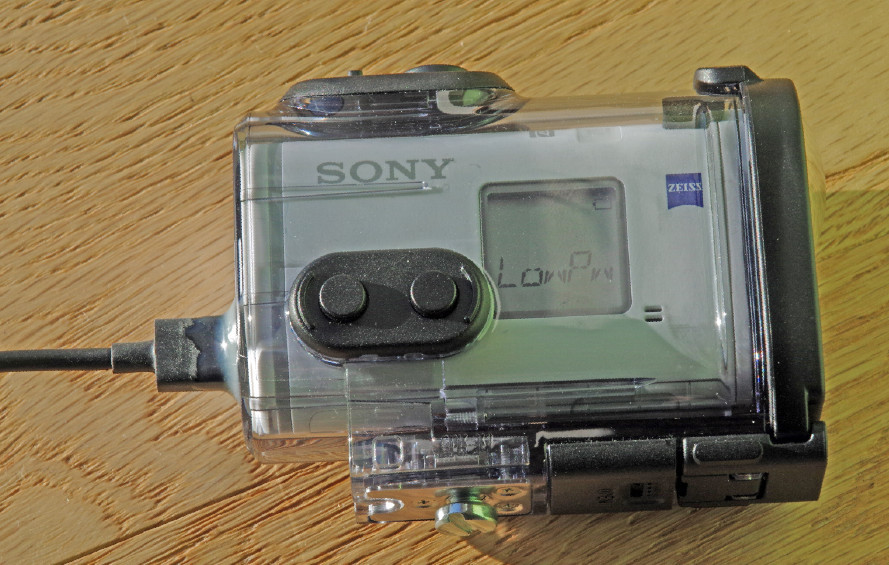
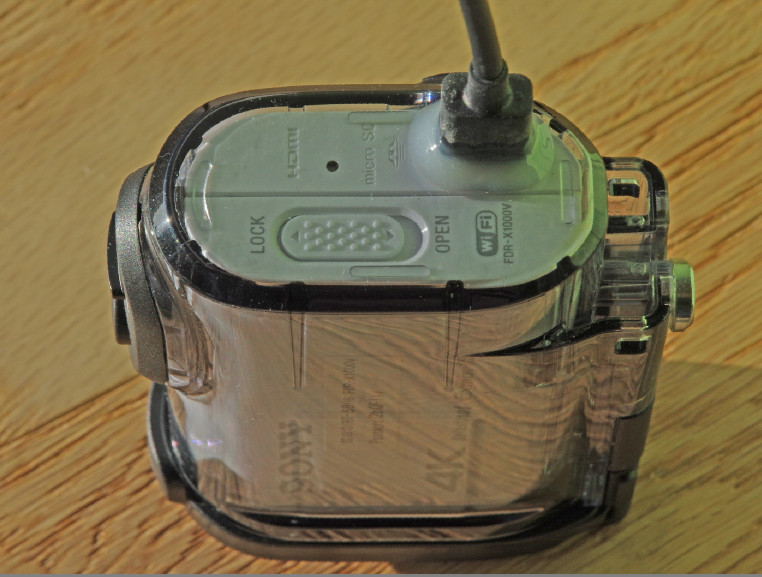
The “depth” of the USB plug had to be done just right, because once the waterproof case is closed, and the seals are compressed, that action presses the camera about 0.5mm backwards in the housing.
Not sure I would want to put in a warranty claim now 
An update, in case anybody interested comes across this:
I have been doing some tests on USB power to the camera.
The config option whether to draw power from USB doesn’t seem to work.
If connected to a supply which has 5V on the two power wires and nothing on the two data wires (i.e. a simple USB port):
The 97mA never varies no matter what the camera is doing.
The only way to charge or externally power this camera is with a “charger” USB port i.e. one which implements one of the charging schemes, which basically involve shorting together the two data wires. I have not tested it with an “Apple” charger which does yet another scheme on the two data wires.
The camera could easily draw useful power (up to 100mA) from a non-charger USB port (i.e. a computer or a tablet).
This policy is not unusual; a Kindle does the same (presumably to make people buy the outrageously overpriced amazon charger) and other things e.g. an Ipad2 does that also.
It’s a pity because the camera could usefully charge itself (even slowly) from a USB connection used to copy files etc out of it.
I wonder how the other cameras on the market work. My guess is that they do something similar; most R&D people will buy the competition and copy what they can.
It is possible that Sony decided to not charge at all from a computer port because the slow charge would result in a “less than perfect consumer experience”  But then why have that config option?
But then why have that config option?